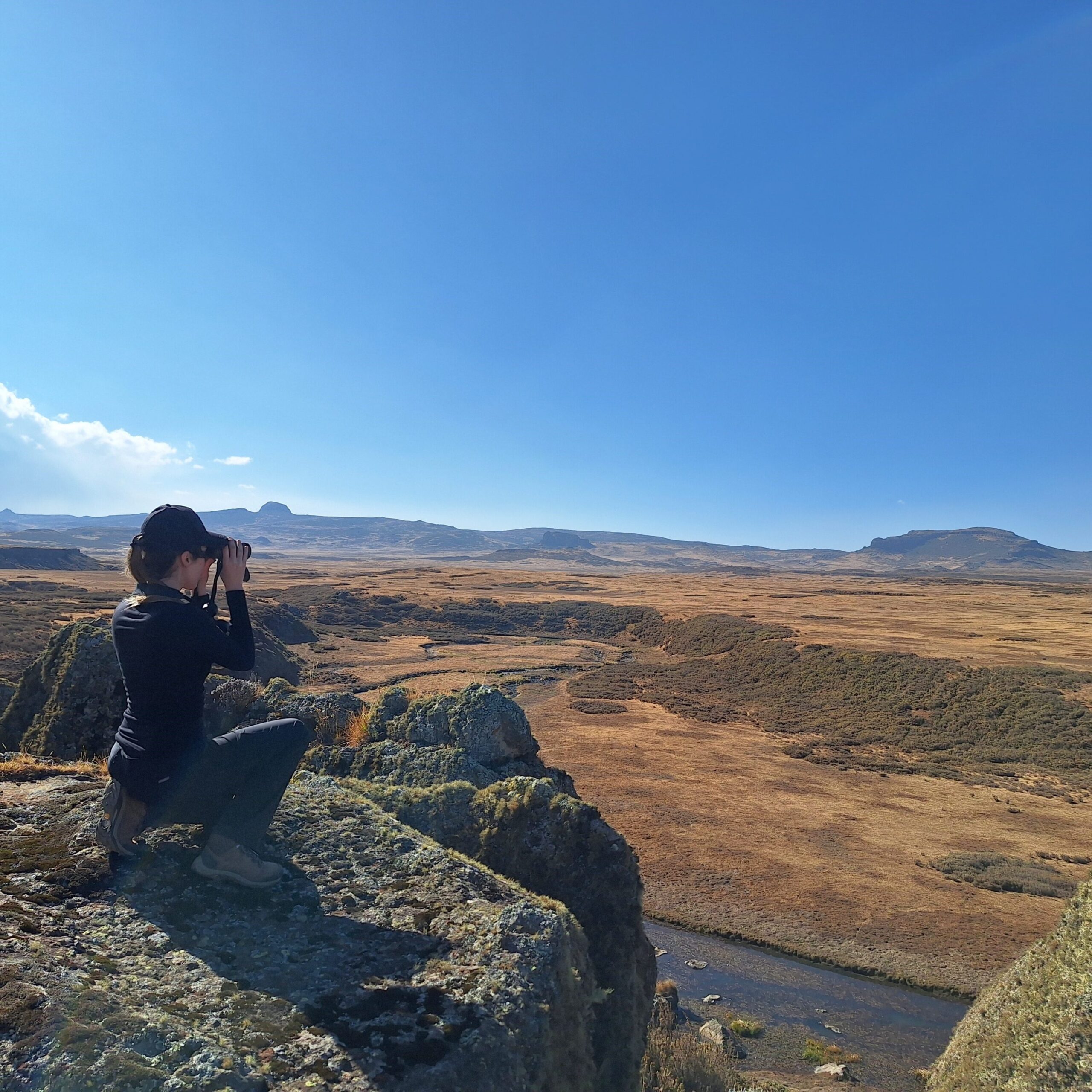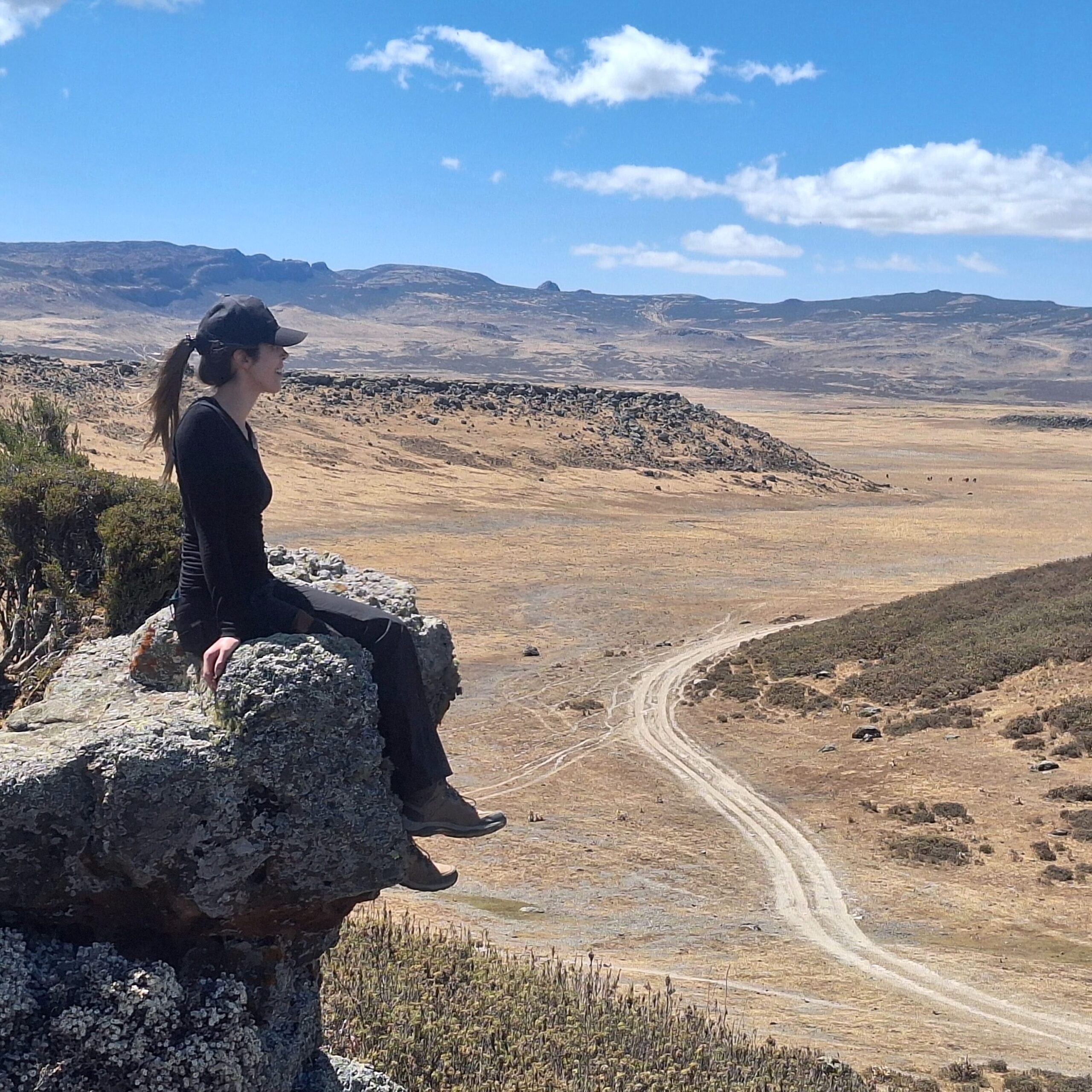
PROFILE
Caroline Sartor is a postdoctoral research associate at WildCRU. Her research focuses on how landscape changes impact population connectivity and genetic diversity in wild species, particularly carnivores. She specialises in habitat suitability modelling, connectivity modelling, spatially explicit population models, and conservation genetics/genomics to investigate how landscape and environmental features influence species distribution, habitat use, population connectivity, evolution, and genetic structure. Her work aims to inform conservation strategies and clarify species taxonomy and evolutionary history.
Born and raised in Brazil, Caroline holds a MSc in Animal Biology from the UniversidadeFederal do Rio Grande do Sul (2016), where she studied the conservation genetics of the highly threatened Pampa’s cat (Leopardus colocola munoai) in southern Brazil and Uruguay. During her PhD at the same institution, she explored the conservation genetics and landscape ecology of two small Neotropical cat species, L. guttulus and L. geoffroyi and their hybrid zones.
Following her PhD, Caroline worked as a postdoctoral researcher at Pontifícia Universidade Católica do Rio Grande do Sul, where she focused on the landscape genetics of jaguars in the Pantanal and conservation genomics of jaguar populations across Brazilian biomes. Her research examined how habitat alterations affect population connectivity and genetic diversity.
Currently, she is part of WildCRU’s Southeast Asian program, where she integrates spatial modeling analyses of ecological processes with biodiversity datasets from over a decade of camera-trapping efforts in the region. Her work aims to understand how anthropogenic changes impact biodiversity, expand ecological knowledge of rare or understudied species and identify hey areas for their conservation. Additionally, she investigates how current and potential future landscape changes affect population connectivity and genetic diversity in carnivore species across the region, like dholes, marble cats and Asian golden cat.


SELECTED PUBLICATIONS
The role of the environment in the spatial dynamics of an extensive hybrid zone between two neotropical cats
Prioritizing conservation areas to mitigate connectivity loss and local extinction risk of a small carnivore (Leopardus guttulus) in South America
Identifying remnant biodiversity hotspots in Southern Asia reveals disequilibrium in mammalian communities
Differentially biased sampling strategies reveal the non-stationarity of species distribution models for Indian small felids
The role of the environment in the spatial dynamics of an extensive hybrid zone between two neotropical cats
Prioritizing conservation areas to mitigate connectivity loss and local extinction risk of a small carnivore (Leopardus guttulus) in South America
Effective conservation management depends on the maintenance of key areas that allow population connectivity across the landscape. However, the lack of knowledge of how habitat conversion affects species movement hinders the identification of these areas. Here, we analyzed the impact of habitat fragmentation on landscape connectivity for Leopardus guttulus, a small Neotropical felid threatened by the high habitat fragmentation across the Atlantic Forest, and mapped and ranked the most important core areas and corridors for conservation actions. We also estimated genetic diversity indices and predicted the viability of the current core areas in the future. Our analyses suggest that L. guttulus populations are fragmented, and connectivity links between populations are few and weak. We predict that due to their size, estimated density and low connectivity, some current core areas may not maintain viable populations in the long-term. Also, ongoing land-use changes may further isolate remaining populations, leading to progressive reductions in the populations they support. In this study, we spatially prioritize the most critical areas for L. guttulus conservation and highlighted the urge that exists in the adoption of management measures for its conservation.